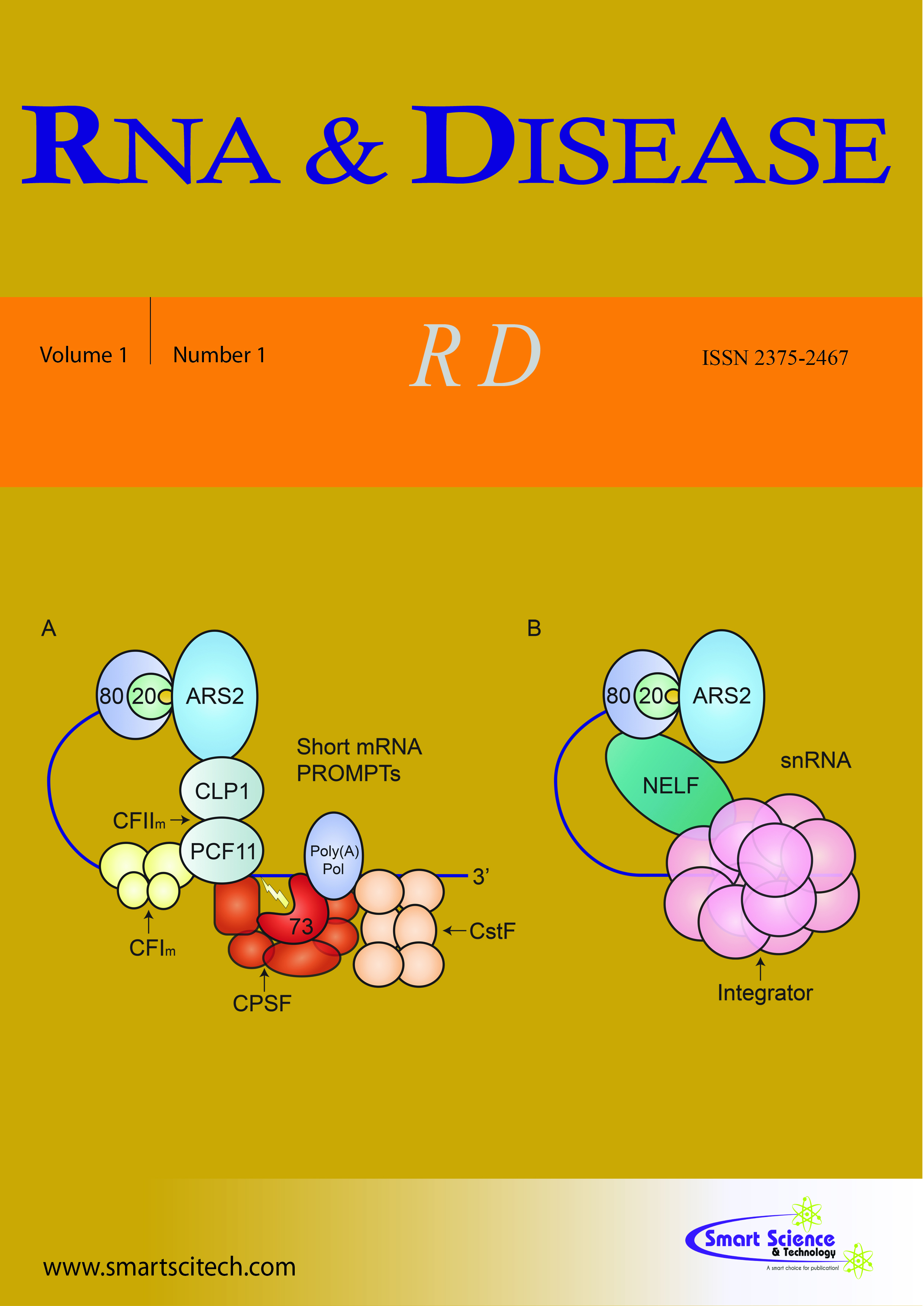Expression pattern of the microRNA miR-1 in ovarian cancer cell lines and tumor tissue samples implies a loss of miR-1's tumor suppressor properties
DOI: 10.14800/rd.348
Abstract
Despite ovarian cancer (OC) represents the leading cause of death in gynecology, however, current understanding of the molecular machinery governing initiation, development and recurrence of the tumor is still limited. Particularly, lack of specific biomarkers defining the complex states of OC limits effective diagnosis and prognosis and, subsequently, hinders appropriate therapy strategies for OC patients. MicroRNA (miR) are small non-coding, regulatory RNA molecules which have critical functions in tumor biology, and which have been functionally grouped into tumor suppressive and tumor promoting miR. miR-1 has been described operating as a tumor suppressor which attenuates proliferation and progression in divers solid cancer entities. Currently, there are no data available concerning miR-1 functionality in progression of OC, particularly, in regard to its potentialas a biomarker for OC diagnosis and treatment. Therefore, the present study examined miR-1 expression levels in established OC cell lines as well as in tissue samples from primary and relapsed OC patients to get a first understanding of putative miR-1 properties in OC progression. Notably, we found miR-1 in OC cell lines was linked to higher cell growth rates. Moreover, analysis of patient samples revealed miR-1 levels in relapsed tumors appeared being up-regulated compared to primary tumors. The findings of our preliminary study (1) may suggest a novel role of miR-1 in OC as a promotor of cancer progression or (2) exhibit a dysregulation of miR-1 functions by a so far unknown disruption of miR-1 regulatory cascades.












